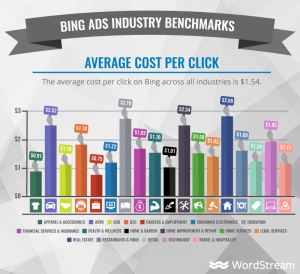Columnist Sara Spivey believes marketers need to adopt new practices and guidelines to preserve shoppers’ trust in consumer-generated content.

As an industry, we’re at a major crossroads.
Ninety percent of consumers say their buying decisions are influenced by online reviews, yet seven out of 10 US and UK consumers have questioned their trustworthiness. This is a problem.
Consumers have a basic right to trust the reviews they read online; reviews, after all, are the key to making an informed purchase decision in today’s digital-first world.
And with last month’s news that Amazon is taking a stronger stance against fake reviews by suing people responsible for writing them, combined with the cry from TripAdvisor users for more stringent verifications of authenticity for review posters, consumer trust in review content is at risk of a serious decline.
Consumer-generated content (CGC), including reviews, is the backbone of a successful retail environment. Not only does it provide consumers with honest opinions from like-minded shoppers that can help them make a more informed purchase decision, but CGC gives brands and retailers a rich source of consumer data that can inform product iterations and marketing strategy.
The minute consumers begin to doubt the authenticity of a site’s content is the minute they cease to participate in the environment, which becomes a detriment to brands and consumers alike. This crisis of confidence comes at a time when marketers have put consumer-generated content front and center in their strategy — it’s incumbent upon us to take steps to restore trust.
Now is the time for every company involved in the collection and display of consumer content — those of us providing the technologies and services, as well as our clients — to take the measures necessary to reinforce consumers’ trust before it is lost for good.
We Must Use The Solutions Available To Us To Fight Fraud
As an industry, it is our responsibility to instill trust in the content we collect and to make sure that customers feel confident in the content they view on our sites, so that they can make a more informed purchase decision.
In 2009, the Word of Mouth Marketing Association implemented a Code of Ethics and Standards of Conduct for the use of CGC — a code that has been recognized by the FTC, yet our industry has failed to come together in support of this code, and it has enabled fraudulent behavior to take hold and instill doubt in the minds of our consumers.
Now, more than ever, we need to adopt new practices — and make adjustments to existing ones — in order to preserve consumers’ trust in consumer-generated content. Amazon has opened the door and made it easier for us to have an open conversation about the changes we should adopt as an industry.
Let’s take this opportunity to act.
Know the submitter. First and foremost, we must be aware of the source of content submitted; it’s the basic building block for analysis tools that help identify patterns suggestive of fraudulent activity, and probably one of the few protective measures familiar to most companies.
Companies should go beyond the basic but crucial step of simply identifying the IP address of a submitted review and explore innovations like device identification technologies that help expose hidden device-account relationships while still protecting users’ privacy.
Verify the purchase. Our industry has access to sophisticated analytics tools that go beyond source information to help identify fake usernames, automated submissions and other practices that compromise authenticity.
We can use verified purchase mechanisms that help ensure that the people writing reviews have actually purchased the product. This is actually the solution TripAdvisor users are requesting the site implement in their recent #NoReceiptNoReview campaign.
Don’t stop at technology solutions. In addition to technological processes and tools, we cannot lose sight of the value played by human moderators. The written word is a complex thing, and technology can only go so far.
When suspicious content is flagged, human analysts can recognize subtle differences in tone and composition — that creative review written in a satirical manner — that might trip up natural language processing and other technology-based systems.
It’s not enough for companies to pick just one method of fraud deterrent; they should be using a combination of these tools.
Even those that appear as reliable as verified purchase have weak points that, when not countered by the strengths of other tools, can leave you at risk for fraud and the corresponding damaging effects to your trustworthy reputation with consumers.
Stand for authenticity. Consumers appreciate a clearly stated policy that outlines a company’s commitment to authentic content and backs up the work a company is doing on the technology side. It gives them an explicit assertion that they can trust the reviews and other content present on the site and strengthens their confidence in your brand.
Take the time to consider what true authenticity means to your company. From our perspective, fraud in the online review world includes any content that is submitted with the purpose of disruption or profit or to gain a dishonest advantage.
This goes beyond obvious fake reviews to include the act of editing, cherry-picking or altering review content by anyone other than the reviewer. Failing to disclose any incentives, like a sweepstakes entry or product sample, that was offered in exchange for reviews is also inauthentic.
Knowing the kind of behavior and content that you will not stand for on your site — and making that commitment visible — is a great first step in moving toward a wholly authentic review environment.
It’s Time To Take A Collective Stand For Authenticity
We need to come together to support a single set of standards, and the regulatory environment worldwide is already pushing us in this direction, as evidenced by the various organizations and companies putting their stakes in the ground regarding authenticity.
In France, AFNOR adopted Standard NF Z74-501, which defines the rules and procedures for the collection, moderation and display of authentic consumer reviews; in Australia, the Australian Competitions & Consumer Commission established guiding principles for online reviews in accordance with the country’s Competition and Consumer Act 2010.
And right here at home, we have WOMMA, the FTC and the New York Attorney General’s office, which became known for its pursuit of online companies and local businesses that purchased fake reviews in 2013.
All of these individual efforts are indeed progress, but they do not make for a fixed system. Authenticity and trust are among the few constants that help businesses inspire people and create lasting, valuable relationships with consumers; it’s fundamental to the value of reviews.
If consumers no longer trust the content they read, it becomes irrelevant. And for companies who use reviews to improve customer service, fine-tune merchandising or improve product manufacturing, fraudulent reviews only serve to provide a distorted picture of reality.
Because of this, we need to come together as an industry to develop a set of guidelines or practices that can serve as a benchmark for authenticity on the web.
When we do these things as an industry, collectively and without exception, we create an environment where all consumers can absolutely trust the validity and authenticity of the consumer-generated content they are reading to help make a purchase decision.
Some opinions expressed in this article may be those of a guest author and not necessarily Marketing Land. Staff authors are listed here.
(Some images used under license from Shutterstock.com.)
Marketing Land – Internet Marketing News, Strategies & Tips
(88)











